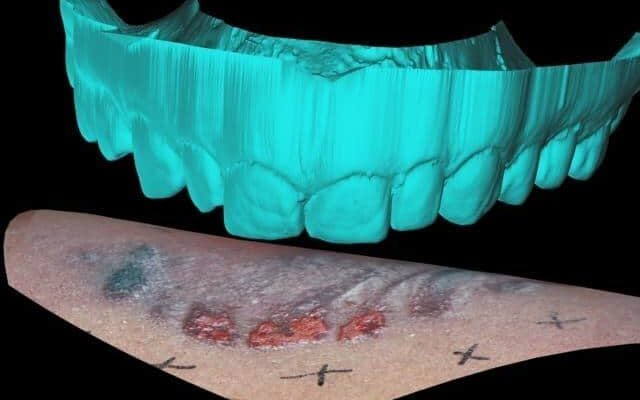In a landmark study conducted at the University of New York at Buffalo School of Dental Medicine, researchers have unveiled alarming findings that challenge the reliability of bitemark evidence in forensic odontology. Bitemark analysis, a discipline used in criminal investigations, has been a subject of controversy for years, leading to potential wrongful convictions based on unfounded assumptions.
The study, encompassing twelve comprehensive investigations, sought to determine the validity of the underlying premises of bitemark analysis. Previous convictions, including the high-profile case of Keith Harward, who spent 33 years in prison for a crime he didn’t commit, have raised concerns about the lack of scientific support for this practice.
Bitemark evidence relies on two key assumptions: first, that each individual’s dentition is unique, and second, that these unique features reliably transfer to human skin when a bite occurs. However, the research conducted by the University of New York team revealed that bitemark transfer to the skin is far from reliable. In fact, significant distortion often occurs, and the distortion is unpredictable, making it challenging to accurately match the bite to a specific individual.
The implications of these findings are profound. Bitemark evidence has been instrumental in securing convictions, sometimes leading to death penalty cases, despite a lack of rigorous scientific backing. Courts have historically admitted bitemark evidence based on precedent rather than its scientific validity, leaving room for serious errors in the legal system.
The researchers emphasize that, in an actual bitemark case, it is typically a bruise, rather than clear tooth indentations, that is examined. The diffuse nature of bruising may not accurately reflect the precise arrangement of teeth that created the wound, further complicating the analysis.
By conducting these groundbreaking studies, the researchers aim to shed light on the critical flaws in bitemark analysis and urge practitioners to exercise caution when presenting this evidence in court. Their research demonstrated that a significant number of individuals within a population could match the bite pattern due to distortion, casting doubt on the accuracy of bitemark comparisons.
This study highlights the urgent need for a reevaluation of the acceptance and application of bitemark evidence in the legal system. The lack of scientific support raises serious concerns about potential wrongful convictions, where innocent individuals may suffer behind bars or even face the death penalty.
Moving forward, it is essential for the legal, forensic odontology, and scientific communities to respond proactively to these findings. Reforms in the courtroom and rigorous cross-examination of bitemark evidence experts are necessary to ensure that science and evidence-based practices prevail over unsupported claims.
As we grapple with the consequences of wrongful convictions based on flawed evidence, this research serves as a call to action to rectify the system and ensure justice is served. It is time to reevaluate the role of bitemark evidence in the legal process and pave the way for a more robust, evidence-based approach to forensic odontology.




















Comments